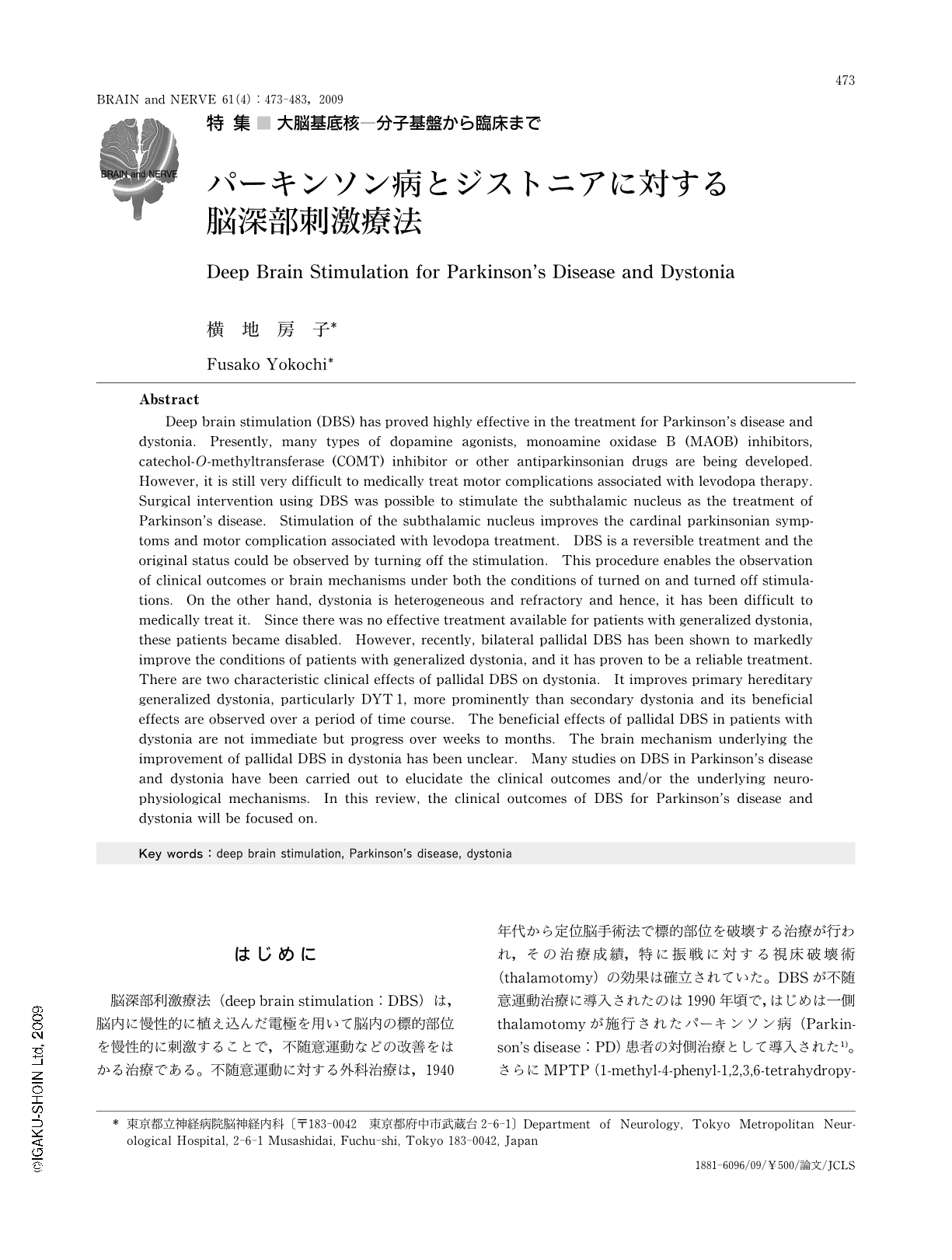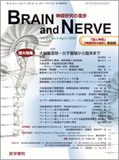Japanese
English
- 有料閲覧
- Abstract 文献概要
- 1ページ目 Look Inside
- 参考文献 Reference
はじめに
脳深部利激療法(deep brain stimulation:DBS)は,脳内に慢性的に植え込んだ電極を用いて脳内の標的部位を慢性的に刺激することで,不随意運動などの改善をはかる治療である。不随意運動に対する外科治療は,1940年代から定位脳手術法で標的部位を破壊する治療が行われ,その治療成績,特に振戦に対する視床破壊術(thalamotomy)の効果は確立されていた。DBSが不随意運動治療に導入されたのは1990年頃で,はじめは一側thalamotomyが施行されたパーキンソン病(Parkinson's disease:PD)患者の対側治療として導入された1)。さらにMPTP(1-methyl-4-phenyl-1,2,3,6-tetrahydropyridine)によるPDモデルサルで,視床下核(STN)破壊によるPD症状の改善2)を受けて,STN-DBSがBenabidら3)によって開始された。
Abstract
Deep brain stimulation (DBS) has proved highly effective in the treatment for Parkinson's disease and dystonia. Presently,many types of dopamine agonists,monoamine oxidase B (MAOB) inhibitors,catechol-O-methyltransferase (COMT) inhibitor or other antiparkinsonian drugs are being developed. However,it is still very difficult to medically treat motor complications associated with levodopa therapy. Surgical intervention using DBS was possible to stimulate the subthalamic nucleus as the treatment of Parkinson's disease. Stimulation of the subthalamic nucleus improves the cardinal parkinsonian symptoms and motor complication associated with levodopa treatment. DBS is a reversible treatment and the original status could be observed by turning off the stimulation. This procedure enables the observation of clinical outcomes or brain mechanisms under both the conditions of turned on and turned off stimulations. On the other hand,dystonia is heterogeneous and refractory and hence,it has been difficult to medically treat it. Since there was no effective treatment available for patients with generalized dystonia,these patients became disabled. However,recently,bilateral pallidal DBS has been shown to markedly improve the conditions of patients with generalized dystonia,and it has proven to be a reliable treatment. There are two characteristic clinical effects of pallidal DBS on dystonia. It improves primary hereditary generalized dystonia,particularly DYT1,more prominently than secondary dystonia and its beneficial effects are observed over a period of time course. The beneficial effects of pallidal DBS in patients with dystonia are not immediate but progress over weeks to months. The brain mechanism underlying the improvement of pallidal DBS in dystonia has been unclear. Many studies on DBS in Parkinson's disease and dystonia have been carried out to elucidate the clinical outcomes and/or the underlying neurophysiological mechanisms. In this review,the clinical outcomes of DBS for Parkinson's disease and dystonia will be focused on.

Copyright © 2009, Igaku-Shoin Ltd. All rights reserved.


